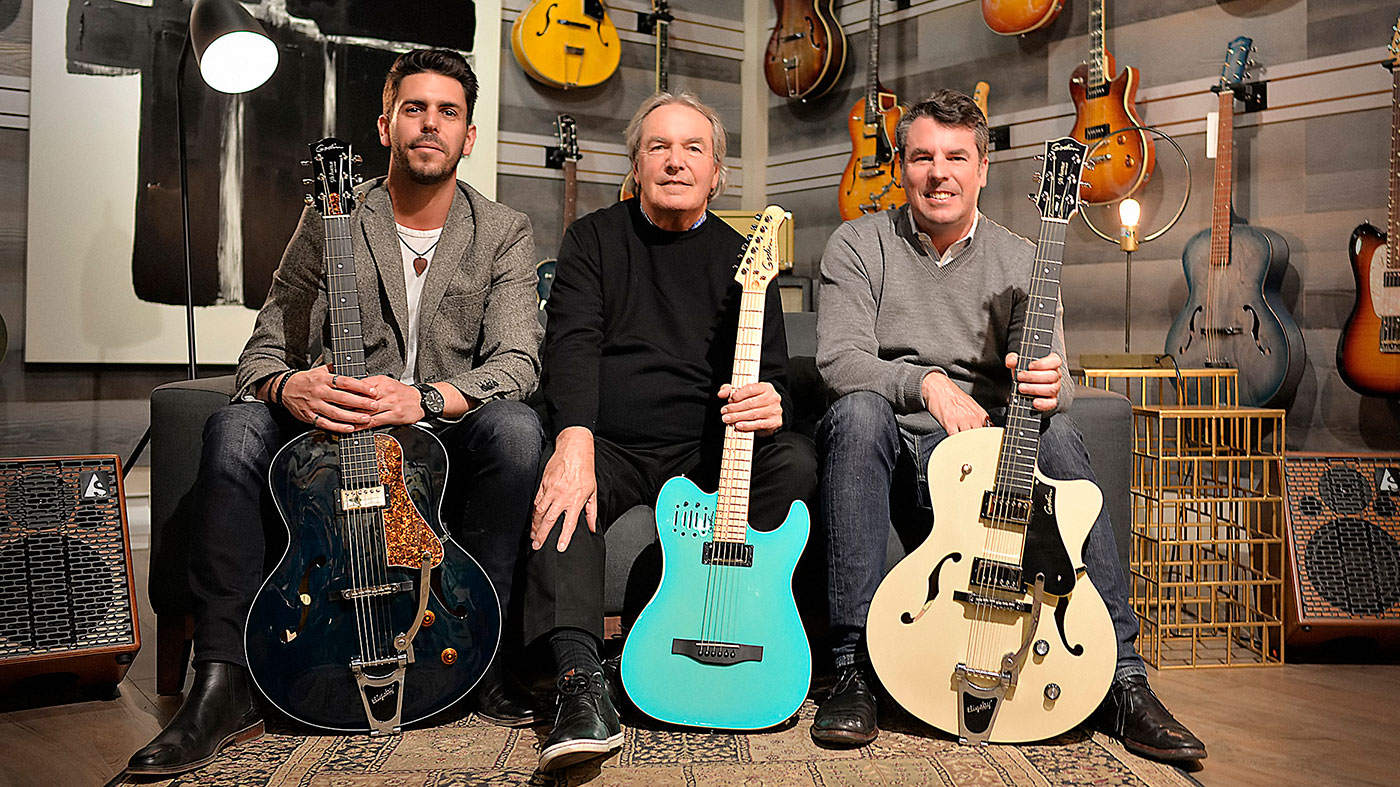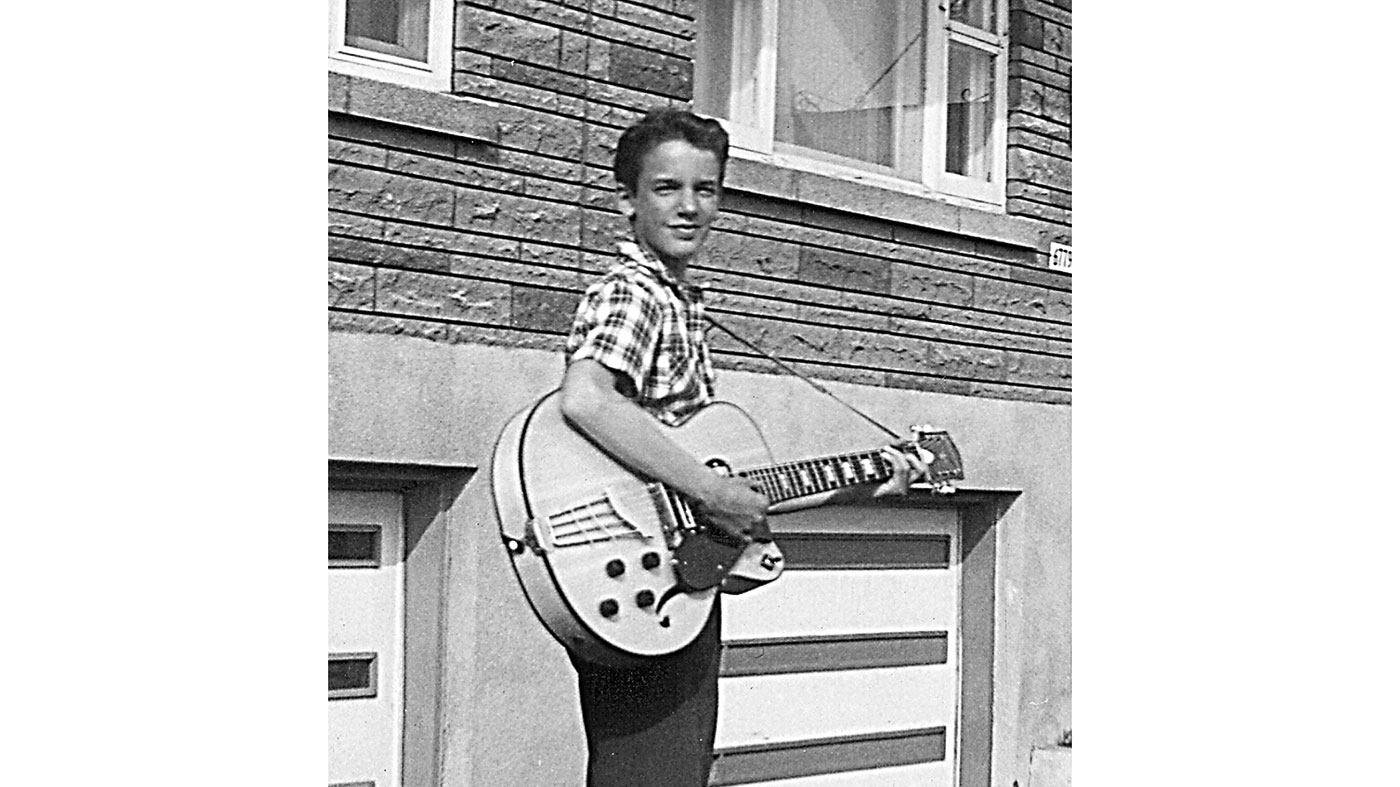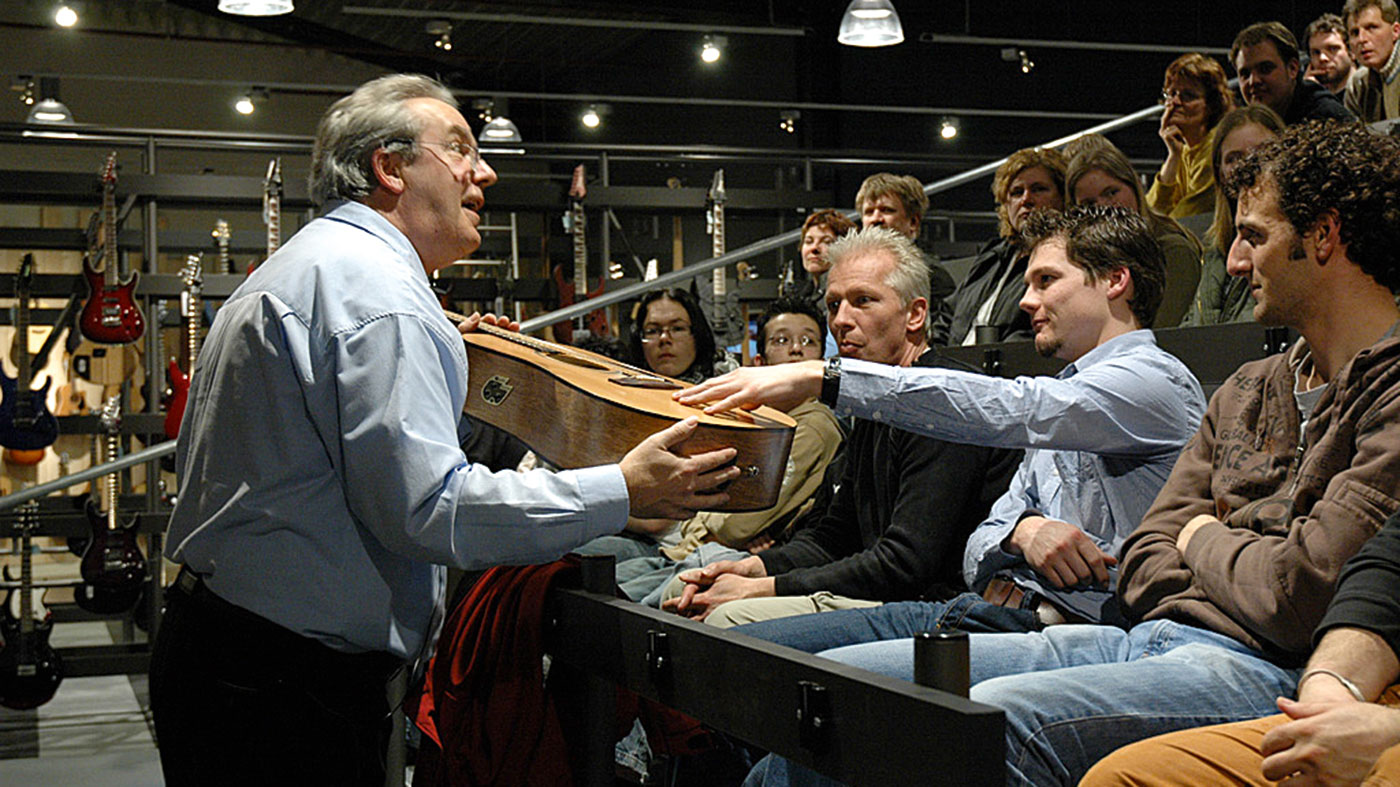Robert Godin: “If you make just the same thing as people did 50 or 60 years ago… Wow, things have changed!”
After four decades, Godin still seems like a ‘new’ brand. Why is that and who exactly is Robert Godin?

A casual question recently posed, “so is Godin about the size of PRS Guitars?” made this writer again wonder why it is that after all these years of guitar making - 46, to be precise - Godin seems to be the perennial new kid on the block in the perception of so many players.
When we speak to company founder Robert Godin in Canada and suggest that after all this time Godin still seems to be somehow underground, he laughs before adding: “Godin sells everything he makes. That’s the difference.”
Now I make as many electrics as I do acoustics. But who really makes electrics nowadays in quantity [in the USA]?
Within the musical instrument industry, of course, Godin has long been recognised as a very major player. Robert Godin’s empire spans a number of brands, Godin, obviously, along with five acoustic guitar lines: Seagull, Norman, La Patrie, Simon & Patrick, and Art & Lutherie, not to mention the unique TRIC guitar cases.
“The Godin Guitar Company operates six guitar factories: five in the Canadian province of Québec and one in the US state of New Hampshire,” states the company’s business profile. “With the head office based in Montréal, Québec, Godin Guitars is the largest manufacturer of guitars in North America, employing 600 people.”
In addition, the company exports to over 65 countries and has always placed innovation as key to both its instruments and the way they are made.
Godin doesn’t discuss numbers today: “It’s too hard at the moment,” he tells us. “Everyone is watching us, everyone wants to know how many instruments we make.” But to give you some idea, back in October 2011 on the eve of Godin’s 40th anniversary, Music Trades magazine stated, “Godin’s 600 employees produce in excess of 175,000 guitars a year.” Three years later, we were told the combined Godin brands were making around 4,000 acoustics per week and around 1,000 electrics (which included the Multiacs, 5th Avenue archtops, and Montreal semis).
“Our business has increased very much in the past two years in terms of the electric guitar,” says Robert today. “Now I make as many electrics as I do acoustics. But who really makes electrics nowadays in quantity [in the USA]?”
Want all the hottest music and gear news, reviews, deals, features and more, direct to your inbox? Sign up here.

Family ties
Almost five decades in, Godin remains a family owned business. “You know, it seems America doesn’t do family business. It’s a different mentality; it’s all corporations, investors, venture capitalists. You often don’t know who the runs the company, the director, and they’ve rarely invested a dime. It’s all like that.
This is not the big boom like the time of The Beatles, but there’s a lot of interest in the guitar: every time I do a clinic it’s full
“But with Godin, this is the company that I started, I invested the money and I left my money in it all my life. Now, of course, it’s my two sons - Simon and Patrick - who run the company, which happened a few years ago and it works very well. I help them, of course, but I don’t make the decisions any more.”
Robert, however, remains hugely active with constant clinic tours, teaching and promotions. “Of course, this is not the big boom like the time of The Beatles, but there’s a lot of interest in the guitar: every time I do a clinic it’s full.”
The innovation that lies at the heart of the company seems to infuse every level of the instruments we see.
“We’ve automated a lot more things,” explains Robert, as an example. “You see, it’s difficult to find people to work - it’s not just us, it’s all over the world. A lot of people have retired and we have found it difficult to replace them. Everyone has this problem. We’ve just finished a robotic system for sanding instruments,” he enthuses. “It’s so precise!”
Materials, where possible, are indigenous to North American: silver leaf maple, wild cherry and Canadian Laurentian basswood. “Laurentian is north, way north of Montréal,” Robert explains. “The trees grow slower and therefore the wood is harder. That’s the difference. If you take basswood from the middle of the USA, or California, it’s too soft. We don’t use that.”

Acoustic and electric
Similarly, Godin has implemented man-made materials such as Richlite, not as an alternative to rosewood or ebony, but “because it’s the best thing you can buy”, exclaims Robert.
We have to adapt to the younger generation: they don’t learn in the same way as we did
“It doesn’t warp, it doesn’t expand, it doesn’t shrink. It’s as hard, even harder actually, than ebony. Using a Richlite fingerboard, we can reduce the thickness of our necks, easily by five per cent, but it also stabilises the neck. It’s as expensive as ebony. It’s not a cheap alternative, and it’s very hard to cut. People that have bought our Richlite-equipped guitars are very happy - you barely have to adjust the neck any more. It’s so stable and it’s the same weight as ebony, too.”
It’s just one more example of how tastes and styles are changing. “For sure, we have to adapt to the younger generation: they don’t learn in the same way as we did, that’s one reason why I’m in the field all the time, watching what they like and don’t like. Now, guitar playing is a hybrid between acoustic and electric. If you make just the same thing as people did 50 or 60 years ago… wow, things have changed!”
Godin, unlike many it seems, is more than happy to adapt to those changes.
Dave Burrluck is one of the world’s most experienced guitar journalists, who started writing back in the '80s for International Musician and Recording World, co-founded The Guitar Magazine and has been the Gear Reviews Editor of Guitarist magazine for the past two decades. Along the way, Dave has been the sole author of The PRS Guitar Book and The Player's Guide to Guitar Maintenance as well as contributing to numerous other books on the electric guitar. Dave is an active gigging and recording musician and still finds time to make, repair and mod guitars, not least for Guitarist’s The Mod Squad.


